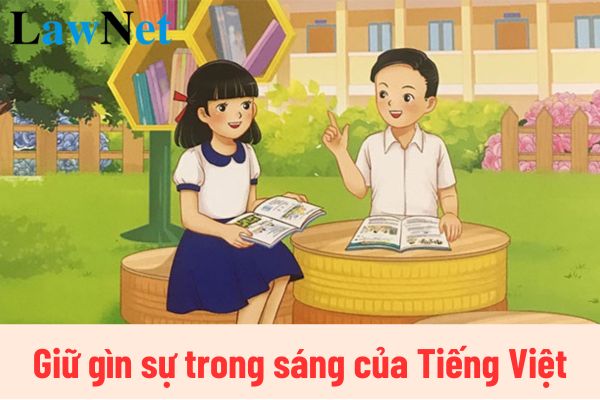Vietnam: What are the 05 sample 600-word argumentative essays on negative issues among youth today? How many types of texts are there in the content of the 12th-grade Literature curriculum?
What are the 05 sample 600-word argumentative essays on negative issues among youth today in Vietnam?
Below are 05 sample 600-word argumentative essays on negative issues among youth today in Vietnam:
Sample 1: The Harm of Laziness Habits in Youth
Suggested Title: Laziness Among Youth and Its Unforeseeable Consequences
In modern society, laziness, lack of motivation, and passivity are becoming prevalent negative issues among youth. This problem not only affects the development of each individual but also impacts the future of the entire society. Understanding the causes and finding solutions to encourage youth to overcome this situation is necessary.
First, laziness and passivity have a strong connection with the development of technology and social networks. Technology makes our lives more convenient but also easily leads to the overuse of entertainment media such as social networks, online videos, and video games. These recreations, although providing instantaneous entertainment, gradually strip the youth of their ability to concentrate, delaying personal development. Spending too much time on activities without long-term value leads to a lack of enthusiasm, making it difficult for young people to maintain energy and motivation for more important tasks.
Laziness not only hinders individuals but also affects society. Young people who tend to be lazy often lack the motivation to strive, thereby easily missing out on many developmental opportunities. When laziness becomes a habit, it leads to stagnation, not only in learning and working but also in social life. A lack of motivation and spontaneity in doing necessary work can make youth become passive, lacking the ability to adapt to changes. This makes it difficult for them to face life challenges on their own, gradually losing the ability to develop comprehensively and lacking the energy to build their future.
To solve this problem, it starts with building a sense of discipline and seeking inner motivation. Discipline is an important factor that helps individuals maintain daily efforts and progress. Young people need to realize that for success, not only talent is required but also patience and discipline. From there, they should set clear short-term and long-term goals to move step by step in the right direction and avoid losing direction in life. With specific goals, natural motivation will form, helping individuals maintain persistence and effort in all circumstances.
Additionally, support from family and society is also essential. The family should be a great source of encouragement, not only through words but also through specific actions such as motivating children to participate in beneficial activities. Creating a positive living environment, oriented towards healthy values, helps young people easily find joy in learning and work. Society, from educational programs to extracurricular activities, needs to create many opportunities for young people to express and develop themselves. Promoting learning movements, skill development, and participation in community activities is also a way to build responsibility and work spirit among youth.
Overall, laziness and lack of motivation are negative issues that can cause stagnation in young people's lives. To change this situation, efforts are needed from oneself, family, and society. When awareness of discipline and internal motivation is established, young people will be more confident to pursue their goals and contribute to the community's development.
Sample 2: The Issue of School Violence
Suggested Title: School Violence and Its Negative Impacts on Youth's Character
School violence is becoming a pressing issue affecting the psychological development and health of the younger generation. Violent behavior not only causes physical harm but also leaves long-lasting psychological scars for victims, reducing their confidence and learning spirit. Understanding the causes of school violence and offering practical solutions is necessary to build a safe school environment.
The root cause of this situation may stem from many factors, among which the lack of emotional control skills is a significant issue. Children, particularly students, often lack the ability to manage emotions and easily fall into stress and frustrations when facing difficulties. Immaturity in emotions makes them susceptible to negative influences, leading to violent behaviors, especially when they are not equipped with conflict resolution and mood control skills.
The living environment is also an important factor contributing to school violence. Children growing up in unsafe environments, influenced by violence or witnessing violent behaviors in the family, tend to consider violence as a way to solve problems. They may replicate negative behaviors from adults and apply them in relationships with peers, creating a vicious cycle of violence. Additionally, the influence of media can increase violent tendencies if children are not guided to receive and analyze information in a healthy way.
Another reason comes from the lack of attention from family and schools. The family plays an important role in shaping the child's character, but if parents do not care or do not spend enough time educating their children, they easily become lost and lack direction. The school, where children spend most of their time, if not set up as a safe and friendly environment, can hardly prevent violent behaviors. The lack of coordination between family and school makes the issue of school violence more difficult to control.
To minimize school violence, practical solutions are needed. One key solution is implementing life skills education programs in schools. These programs help students improve their emotional control, conflict resolution, and positive communication skills. When they are equipped with the necessary knowledge and skills, the incidence of violent behaviors will significantly decrease.
Both families and schools need to work closely to build a friendly and safe learning environment. Families should spend time listening to and understanding their children's emotions and convey moral and humane values. The school should regularly organize activities to connect students, build team spirit, and support each other. Establishing clear rules and creating a violence-free learning environment creates safety and trust for students, making them feel secure and more engaged with school.
In summary, school violence is not just an individual's problem but also a family and social issue. To eliminate this situation, proper attention from the family, school, and the entire society is needed. Only when students live in a safe school environment, educated on life skills and love, can school violence be reduced and gradually eliminated.
Sample 3: Excessive Dependence on Social Networks by Youth
Suggested Title: When Social Networks Dominate the Lives of Today’s Youth
The phenomenon of young people spending too much time on social networks has become a common issue, leaving negative consequences on personal and social life. Social network addiction not only diminishes direct communication ability but also affects mental health and academic results. Understanding the causes and implementing appropriate measures are necessary to help young people better manage their use of social networks.
One of the biggest consequences of social media overuse is the decline in direct communication skills. Youth spend most of their time connecting through online applications instead of meeting and conversing face-to-face. Social networks may make it easier for them to connect with more people, but there is a lack of sincerity and real communication skills. Over time, the ability to listen, understand, and resolve conflicts in real relationships will be impacted, reducing the quality of personal communication.
Spending too much time on social networks also adversely affects the mental health of young people. Studies show that social media can lead to negative emotions such as anxiety, depression, and pressure. Through social networks, young people constantly compare themselves to others and easily feel inferior, dissatisfied with their lives. Additionally, the widespread dissemination of negative and unhealthy content makes young people easily caught in an unstable emotional whirlpool. Long-term use of social networks also causes sleep disorders and reduced concentration ability, severely affecting mental health.
Social networks are also one of the main causes of academic decline. Instead of spending time studying or developing skills, many young people devote their time to surfing networks, watching videos, or posting images. This not only reduces study time but also diminishes concentration, causing them to be distracted and lack patience in studying. Not being able to control the time spent on social networks leads to an imbalance between real life and virtual life, reducing the study efficiency of many students.
The primary cause of this situation is that social networks give a sense of connection, comfort, and excitement. Users can easily update information, chat, and share thoughts and images quickly. However, this feeling is very addictive because it meets human needs for private investment without requiring much effort, causing young people to easily fall into the virtual world and find it difficult to control themselves.
To resolve this issue, it is important to raise awareness among young people about the harms of social media overuse. Schools and families should help them understand the negative impacts on communication skills, mental health, and academic performance. Educational programs on time management and reasonable technology usage skills can help young people cultivate self-awareness in using social networks.
Additionally, encouraging young people to participate in extracurricular activities, sports, and study clubs is essential. These activities not only help them relieve stress but also bring joy and meaning to life, thereby reducing dependence on social networks. Participation in physical activities and direct communication with friends helps young people develop comprehensively in terms of spirit and life skills.
In summary, the overuse of social networks by youth is an issue that needs concern and prompt handling. When aware of the harms of social media and changing their lifestyle positively, young people will know how to balance virtual and real life, contributing to creating a generation with strong willpower and better self-control.
Sample 4: Materialistic Lifestyle Among Youth
Suggested Title: Materialism and Its Negative Effects on the Young Generation
A materialistic lifestyle is gradually becoming a negative trend in the lives of many young people today, where material benefits are prioritized over spiritual, ethical, and human values. Materialism not only degrades individual qualities but also leaves negative impacts on the community. It is necessary to understand the causes and harms of this lifestyle, as well as to find educational measures and raise community awareness, to build a generation of responsible and ethical youth.
Materialism is most evident through the fact that many young people focus only on material benefits and fame, seeing these as the main measure for evaluating oneself and others. Living materialistically, people easily fall into following, chasing after superficial values, ignoring moral standards. They are willing to sacrifice dignity, deceit, or even harm others to achieve their goals. Spiritual values, such as respect, honesty, and social responsibility, gradually become disregarded and are even considered unnecessary. This causes young people to become increasingly selfish, lacking empathy and responsibility towards those around them.
Materialism not only affects individuals but also has a large impact on society. When this lifestyle is widespread, social relationships gradually become fragile, lack sincerity, and are easily broken. Instead of supporting and helping each other, people tend to care only about personal benefits. This reduces community spirit and solidarity, causing insecurity and distrust in society. Selfishness and chasing after material things can also lead to negative issues such as fraud, deception, and violence, causing society to lose important humanistic values.
The causes of materialism among young people can originate from many factors, where the living environment and media influence are important factors. Modern society tends to glorify those who are financially successful, leading young people to easily mistake that personal value lies in material possessions. Media and social networks also play a significant role in promoting luxurious and lavish lifestyles, leading to pressure to keep up with trends, achieving "success" quickly and easily. Additionally, the lack of character education makes young people incapable of fully recognizing the importance of ethics and dignity.
To overcome this situation, humanitarian value education is a necessary solution. Schools and families need to focus on building a solid ethical foundation for young people, helping them understand that life is not only material but also dedication and responsibility to the community. Stories of kindness, sacrifice, and community spirit should be encouraged, helping young people recognize that success is not only personal gain but also meaningful contributions to society.
Raising community awareness is also an effective measure. Charity activities, volunteer work, and community development programs can help young people interact with difficult situations, thereby motivating them to live responsibly and contribute to society. Participating in collective activities not only helps young people develop life skills but also helps them understand the importance of compassion and social responsibility.
In summary, a materialistic lifestyle is a worrisome issue, harming not only individuals but also society as a whole. To solve this issue, there needs to be a combination of education and support from families, schools, and society. Only when equipped with full humanitarian values and community awareness can young people develop comprehensively, becoming responsible citizens who contribute positively to society.
Sample 5: The Impact of Success Pressure on the Psychology of Youth
Suggested Title: When Success Pressure Becomes a Burden for Youth
Pressure for success and achievement is becoming a psychological burden for many young people in the learning and work environment. Setting excessively high expectations not only causes stress and fatigue but also risks leading to serious psychological issues such as depression. This phenomenon not only affects individuals but also has negative impacts on society as a whole. Understanding the causes of this pressure and seeking appropriate solutions is necessary to help young people balance goals and mental health.
Success pressure stems from excessive expectations from families and society. Many parents, wanting their children to have a good life, often set large goals or compare them with peers. This makes them feel they must achieve high results not to disappoint their families. Additionally, today's societal standards of success are often linked to fame, high income, and celebrity status. This creates a misleading standard, where success is only defined by material and status, causing young people to feel inferior if they do not meet those standards.
In the learning and work environment, the pressure to achieve is even greater when young people continuously compete to maintain their positions. This leads to many negative consequences, from stress and fatigue to lack of confidence and even depression. When constantly pursuing success and achievement, young people easily fall into a whirlwind of anxiety and fear of failure. They have no time for themselves, their families, or recreational activities, causing mental health to gradually deteriorate. Excessive pressure also diminishes creativity and joy in learning and work, making studying and working more burdensome.
To alleviate this issue, there needs to be a change in society's concept of success. Success is not just about achieving fame or wealth, but also about being satisfied with one's efforts and contributions to society. Families and society need to encourage young people to set goals that are suitable to their abilities and personal desires rather than chasing external standards. When they feel respected and understood, the pressure on achievement will lessen and be replaced with confidence in their own abilities.
Encouraging young people to learn to accept failure is also an important solution. Failure is a part of the growth process, and no failure is meaningless if they know how to learn from it. Instead of viewing failure as something to fear, we should help young people see it as a valuable lesson. Through this, they will gradually form a positive attitude, knowing how to accept and face difficulties, instead of succumbing to pressure and fear.
In general, success and achievement pressure is a problem that needs attention and early resolution to help the young generation develop comprehensively both physically and mentally. Families, schools, and society must collaborate to build an environment that encourages effort instead of imposing achievement. When each individual finds joy in development, they will contribute positively to the community and create a more healthy and harmonious society.
Note: The above 05 sample 600-word argumentative essays on negative issues among youth today in Vietnam are for reference only!

What are the 05 sample 600-word argumentative essays on negative issues among youth today in Vietnam? How many types of texts are there in the content of the 12th-grade Literature curriculum? (Image from the Internet)
How many types of texts are there in the content of the 12th-grade Literature curriculum in Vietnam?
Under Section 6 of the Appendix to the General Education Program in Literature issued together with Circular 32/2018/TT-BGDDT, there are 02 types of texts in the content of the 12th-grade Literature curriculum in Vietnam as follows:
- Argumentative texts: the role of arguments, reasons, and evidence; the purpose, emotions, and viewpoints of the writer; the methods to enhance affirmation or negation in argumentative texts; the way of argumentation and expressive language; speeches in launching a movement or a social activity; argumentative essays on issues related to young people; comparative argumentative essays evaluating two literary works, either of the same or different genres.
- Informative texts: the value of the topic, main information of the text; types of data and data reliability; business exchange letters; project task reports, or research results on a natural or social issue.
What are the orientations in educational methods for the 12th-grade Literature curriculum in Vietnam?
Under Section 6 in the Appendix to the General Education Program in Literature issued with Circular 32/2018/TT-BGDDT, the orientations in educational methods for the 12th-grade Literature curriculum in Vietnam are as follows:
The Literature curriculum utilizes education methods oriented toward integrated and differentiated teaching; diversifying educational methods, means, and organizational forms; promoting active, proactive, and creative learning, and applying the knowledge and skills of students.
- Based on the program, teachers proactively and flexibly build and organize lessons according to the following orientations:
+ Implement intra-disciplinary integration requirements (both knowledge and skills), interdisciplinary integration, and integrate priority education content (cross-disciplinary); implement differentiated teaching according to student subjects at all levels and differentiation contributing to career orientation in high school education.
+ Train students in methods of reading, writing, speaking, and listening; practice, and experience in receiving and applying knowledge of the Vietnamese language and literature through learning activities in and out of the classroom; focus on using teaching means, overcoming the traditional reading and copying teaching style, developing thinking, training skillful use of means for students.
+ Enhance and promote student activeness and self-reliance; allocate ample time for students to study textbooks and learning materials, practice, conduct presentations, and discussions, and defend learning results to enable students to read, write, speak, and listen according to varying demands and levels; assess and evaluate student task fulfillment in their learning tasks.










- Vietnam: What is the sample report on a modern literary matter - innovations and renovations in the short stories "Chiếc thuyền ngoài xa" and "Một người Hà Nội"?
- Vietnam: What are the 05 sample 600-word argumentative essays on negative issues among youth today? How many types of texts are there in the content of the 12th-grade Literature curriculum?
- Vietnam: What are the best sample paragraphs about your family for 6th-grade students? What elective subjects do 6th-grade students learn?
- Vietnam: What are the best sample self-introductions in English for 5th-grade students? What topics are covered by the 5th-grade English curriculum?
- Vietnam: What are the sample imaginary paragraphs on Tin-tin and Mi-tin entering the magical garden for 4th-grade students? What are the 05 essential qualities required for 4th-grade students?
- Vietnam: What are the guidelines for preparing the briefest lesson "A Strange Tale of the Fisherman's House/Truyện lạ nhà thuyền chài"? What is the eligibility for lower secondary graduation recognition for 9th-grade students?
- What are the enrollment methods of Pham Ngoc Thach University of Medicine in 2025?
- Vietnam: What are the sample 1st end-of-semester question papers of 9th-grade Literature? What is the form of assessment for 9th-grade Literature?
- Vietnam: What are the 10 sample 200-word social argumentative paragraphs on the strength of discipline? Is improving manpower one of the goals of education?
- What are the sample social argumentative essays on a social issue raised from a literary work in the 8th-grade Literature curriculum in Vietnam?

